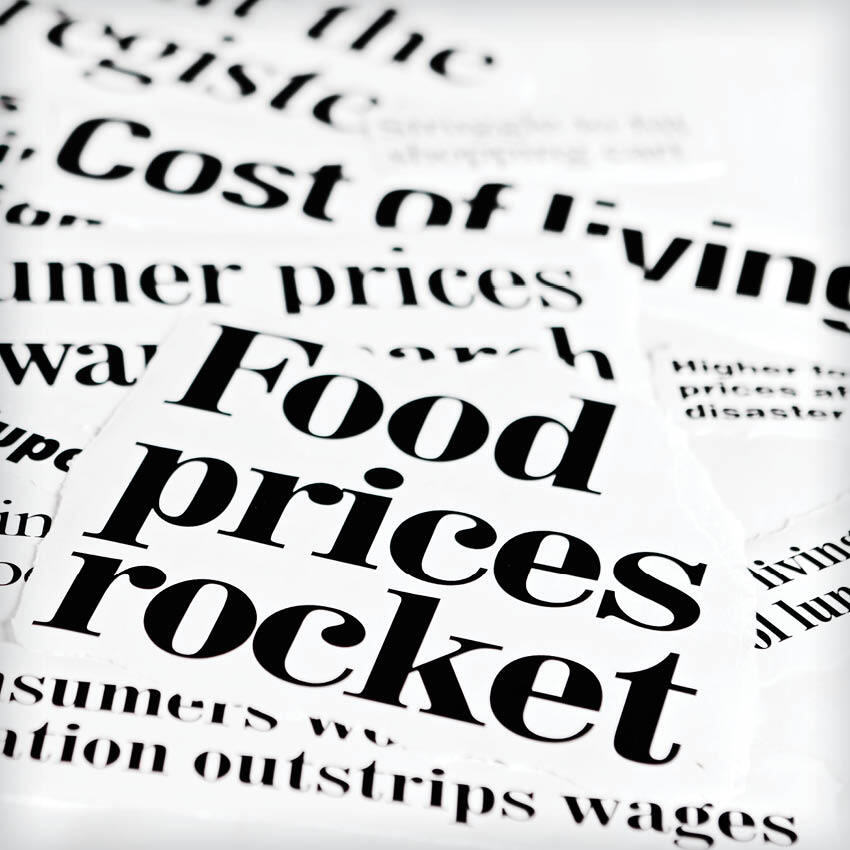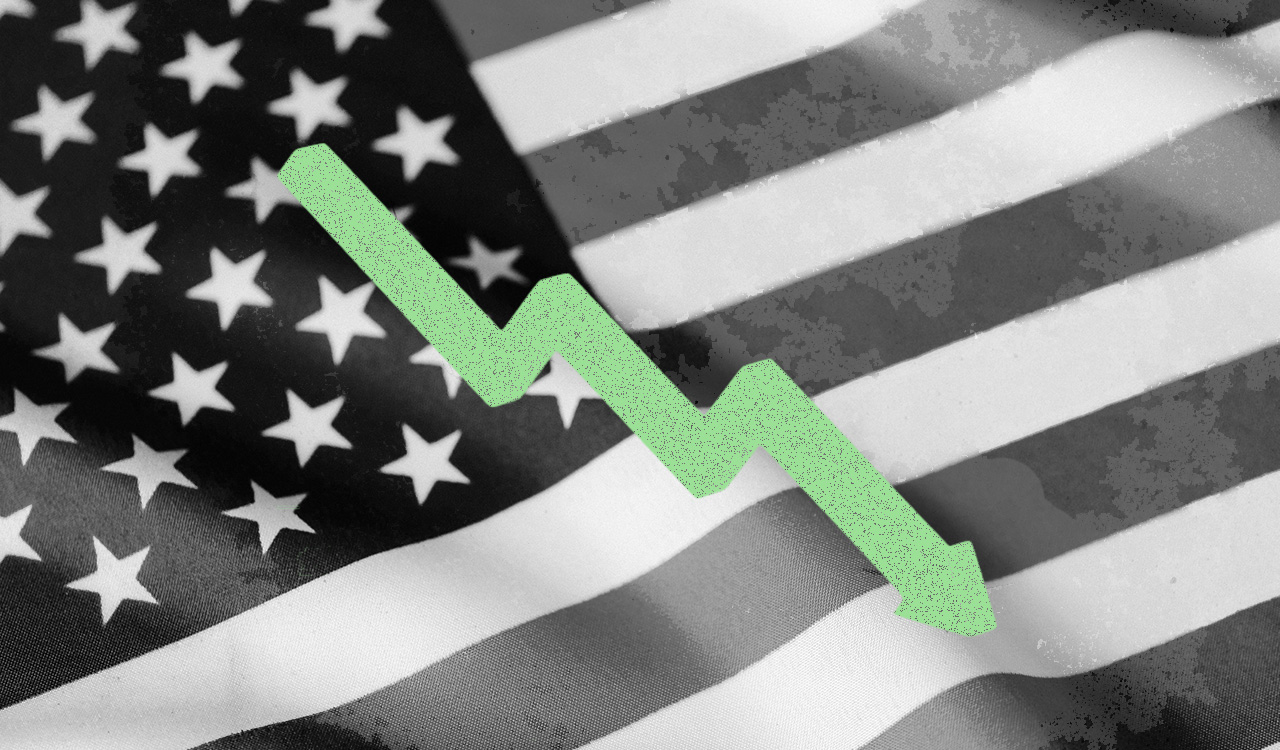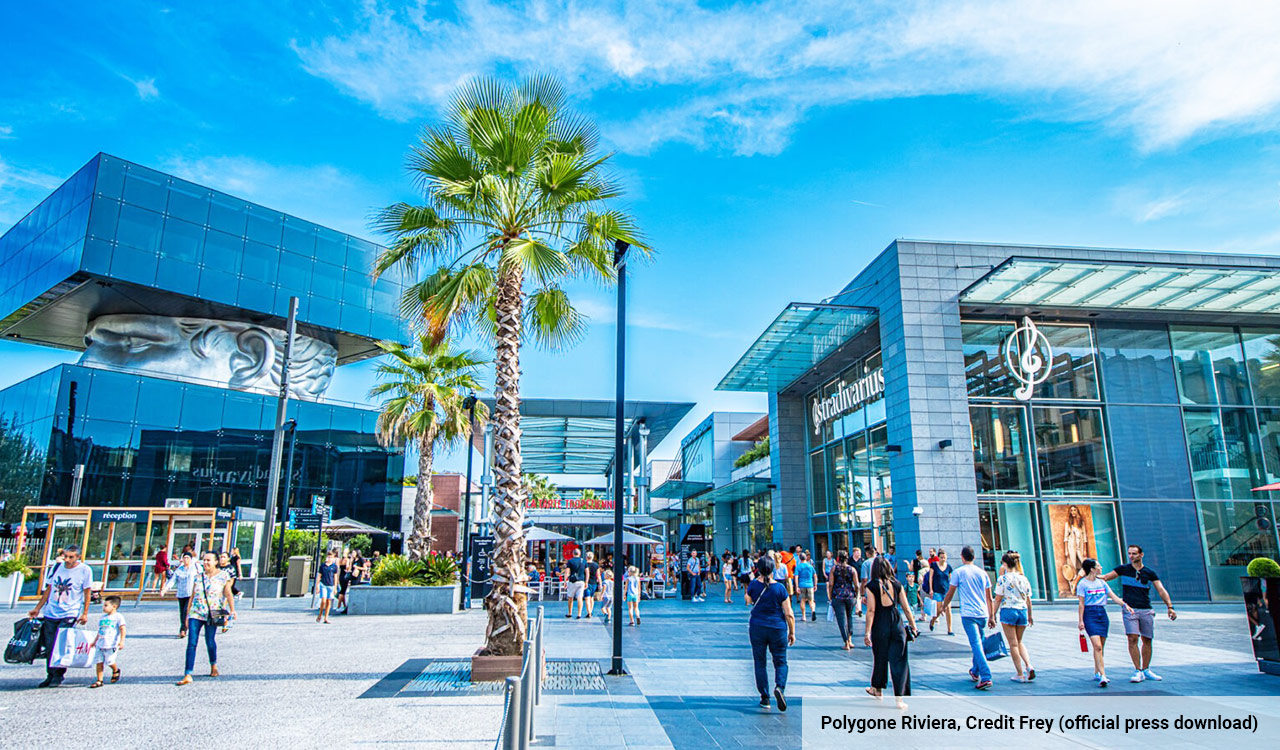What if the current price increases American consumers are experiencing are not temporary, caused by inflationary pressures, but instead are signs of a once every 70- to 100-year massive economic recalibration?
Free Range Pricing
We saw this happen in the last century. It started with a gasoline crisis in 1973, and it continued into the 1980s. During that period, prices for nearly everything soared and then most stayed at higher levels creating an entirely new consumer reality. Prices were rising so fast that many retailers for a time did not even attach price tags to categories of merchandise, including jewelry, appliances, autos, and more. A refrigerator or a car might rise in price from one week to the next, and gold jewelry prices were computed daily based on the spot-market gold price and karat weight. Consumers rushed to buy everything—before prices rose even higher. It redefined dynamic pricing.
With the social and workforce shifts taking place today, the economy seems primed for a 21st century recalibration. It started with massive social and workforce changes, that resulted in higher family incomes, and what was thought to be runaway inflation soon become the new normal.
During this period, workers for large businesses often got two-part raises each year: a cost-of-living increase, based on the inflation rate, and a merit increase, based on performance, so consumers were somewhat protected from the runaway inflation. Those were glory days for retailers, and they ushered in an era of record-breaking sales and paved the way for brand supremacy, new marketing strategies, product innovation, and a golden age of physical retail and mall expansion.
Pricing Paradigms
Previously, prices for goods were based on costs of production plus add-ons for overhead, including transportation and operational expenses. But that pricing model faded as marketers sought to convince consumers that goods were worth more, based initially on inflation, then on premiumization, brand enhancement, and aggressive advertising.
Over a decade or more sustained high inflation of home and auto prices and almost everything else doubled and in some cases more than doubled. Between the early 70s and the mid-80s, the price of a typical middle-class home soared from around $25,000 to $100,000 or more, a four-fold increase, with mortgage interest rates close to 17 percent in 1981.
Why did this occur? The answer is simple: It was facilitated by massive social change, the switch from single wage-earner households to two wage-earner households. As millions of women entered the workforce, families had more disposable income and prices rose to take advantage of that. This was accomplished as prices also began to take into account the ability and willingness of middle-class consumers to pay more—it was a new pricing paradigm.
Two-Income Households
Some women worked outside the home in the 1940s during World War II, but it wasn’t until the late 60s that women sought long-term jobs across a spectrum of careers and industries in
numbers that changed the family financial dynamic. Suddenly, the family that had lived on one income in the past now had two incomes, and this amplified family budgets and opened the doors to new opportunities. Two incomes covered new homes and cars, vacations, better education for kids, and a world of consumer goods that ranged from the affordable offerings of the new big-box discount stores (Target, Walmart, Home Depot, etc.) to specialty stores. An era of luxury was launched by the newly affluent revolution. Boomers turned into YUPPIES (Young Upwardly Mobile Professionals), driving Bimmers (BMWs) and pushing $500 baby buggies.
Easy consumer credit paved the way to a world of new possessions. Credit cards exploded in popularity, financing of homes was extended from 20-year to 30-year loans, and car loans expanded to five years. The top segment of the middle class suddenly became the “affluents.” Everyone expected [or hoped] to become a millionaire, and Wall Street was going to take them there. Equities became the elixir that would transform America. As consumers gained financial ground, businesses began to transfer financial benefit responsibilities to their employees, establishing employee-funded retirement accounts, recommending investments in funds and stocks. Billions of dollars in retirement investments poured into Wall Street, catapulting values of stocks and enriching businesses and millionaires in a way never before possible. By the end of the 20th century, many millionaires had become billionaires.
The New Normal Brings Storm Clouds
In the waning years of the 20th century, whatever advantage middle-class families had gained from rising incomes were mitigated by price increases that had become the new normal. Middle-class families began losing financial ground and “wage stagnation” dominated for several decades. A flood of cheap imported goods from China wallpapered over the problems for some time, but by the Great Recession of 2007-2009, it became apparent that many American families were struggling to maintain middle-class living standards. With wages frozen in place, more entitlement costs (retirement, health care) reversed back onto workers, and changes in the workplace due to offshoring of jobs (which resulted in mass layoffs), increasing automation, and requirements for new technology skills, many American families were caught in a bind. According to the Census Bureau in 2016/2017, 30 percent of Americans could be classified as “poor” or “near poor.” Two salaries were no longer an option, but became a requirement in order to maintain a middle-class life style.
During successive steep recessions, many families were faced with new challenges to financial success. Investment portfolios suffered significant losses (averaging around 30 percent per occurrence) when investment bubbles burst. While many middle-class portfolios recovered losses over time, top-line growth in investments was radically diminished for all except the wealthiest who had the knowledge and resources to treat these downturns as gigantic investment opportunities. The wealthy were now catapulted into the multi-billionaire stratosphere—creating a deeper and deeper chasm between rich and poor.
The Current Recalibration
With the social and workforce shifts taking place today, the economy seems primed for a 21st century recalibration. It will not play out as the recalibration did in the last century, of course, but there are distinct similarities. This recalibration started with massive social and workforce changes, that resulted in higher family incomes, and what was thought to be runaway inflation soon become the new normal. Today, the Covid pandemic is also playing a role, accelerating these trends.
Here are some influencing factors today:
First Real Wage Increases in Years
Several decades of wage stagnation have resulted in a pent-up demand for wage increases across a wide range of jobs, especially bottom-quartile workers in food and retail, hospitality, warehouse/delivery, agriculture, and more. Many of these workers are jumping from minimum wage [$7.25 an hour] to $15.00, $18.00, or more. Twenty-five states have announced that they will increase hourly pay in 2022, and many retailers have already enacted pay increases. Starbucks just announced it will now pay around $17.00 an hour, with tenured employees pushing $23 an hour. Additionally, the government’s pandemic stimulus checks temporarily added dollars to the pockets of workers. Salary increases are also occurring at the middle- and top-end of the employment spectrum. The “U.S. News 2022 Best Jobs” report lists many positions paying more than $100,000 a year. As recently as a decade or so ago, $100,000+ salaries were rare, outside a few special fields. As the fog clears, we will likely see that family incomes have significantly increased, as they did during major workforce changes in the last century. Unfortunately, rising inflation—consumer prices rose by seven percent in December, the highest rate in close to 40 years—is significantly diminishing the buying power of these new salaries before it can be enjoyed by many consumers.
Workers Gaining Power
As Covid-related job vacancies increase, and as workers are quitting in record numbers, companies are struggling to fill positions. Recently, some retailers have had to close their doors temporarily due to lack of staff, including restaurants, bank branches and drug stores. Employees can now demand better pay and better working conditions. Additionally, there is a renewed interest among workers in union representation. Around 8,400 unionized workers at Kroger’s Denver King Soopers stores went on strike in late 2021, and workers at Amazon, Starbucks, and other companies, have expressed interest in unionizing. Going forward, some employers are developing programs to “re-recruit” existing employees to encourage retention.
Single Wage-Earner Households Increasing
We are now seeing an increase in single wage-earner households—single heads of households and single parents with kid(s). According to the “2020 Current Population Survey,” 28 percent of U.S. households have single-person heads, up from 13 percent in 1970. Traditionally, single heads of households have been primarily female, but we are now seeing an increase in male heads of single households as well. High divorce rates (one in every three marriages ends in divorce), younger generations postponing marriage (The U.S. average age of marriage is now 32, and the millennial marriage rate is only 26 percent/Pew Research), more independent women/mothers living on their own, and an increasing numbers of widowed retirees, all figure into the equation. Falling population rates may also become a factor. The Census Bureau reports that the U.S. population grew by a mere 0.1 percent from July 2020 to July 2021—the slowest growth in U.S. history—no doubt, partially reflecting the impact of the pandemic. Increasing population is a relied upon driver of economic growth. Optimistically, looking ahead, we might predict a second “Baby Boom” once the worst of the pandemic has passed (the first “Baby Boom” was in the ebullient period after world War II).
- A New Reality for Retail
- Meta Metamorphosis: More and more, business, entertainment, and life, will take place in the digital universe—from shopping to exploring the metaverse (online interactive virtual reality). Stores will need to develop new strategies to attract consumers, combining merchandise with adventures, information, games, social connections and more). The metaverse store, or “meta-store” could become more important than the brick-and-mortar store—and much more important than online shopping as we know it.
- Price: Under stress from inflation, many consumers will give more and more importance to price, with price often becoming the key differentiator and reason to buy—not only for essentials, but also for homes, autos, fashion, and more. Walmart, Target, and national grocery chains will face more competition from lower-end Aldi, Lidl, and Dollar Stores. We are already seeing branding become less important, as demand for cheaper private label products grows at chains, including Publix and Kroger. Amazon may find itself in a discount straight jacket as it becomes more difficult to make a profit while maintaining its position as a low-price leader.
- Revaluing workers: Over the past several decades, businesses have treated workers like disposable commodities, to be hired and fired at will. The horizontal organizational chart, with a few elite officers at the top and masses of rank-and-file workers at the bottom, has blown out the career ladder, destroyed employee loyalty, and made workers feel undervalued. Businesses now need to prioritize workers, realizing that a well-trained employee with experience and knowledge is one of their greatest assets.
- Retailers need to realign supply chains as manufacturing businesses begin “on-shoring,” bringing many supply sources back to the United States (unfortunately, due to automation and robotics, this will not create huge numbers of new jobs). It will allow more control and flexibility, will protect from shortages, and protect from product contamination/tampering (embedded malware in computer chips, toxic agents in foods) by foreign players, a growing issue as international tensions and hostilities become more concerning.
A Three-Century Pattern
Looking at history, we can see three major economic recalibrations over the past three centuries. There was a major recalibration of the economy in the 19th century Victorian era, carrying over into the turn of the century Edwardian era. Millions of people, who had previously been employed, primarily in agriculture and in service to the aristocracy or wealthy, were able to find better paying jobs in manufacturing, as new factories sprang up; and in emerging industries, including the railroad, expanding global trade, and mercantilism.
The second recalibration of the Industrial Revolution brought financial independence to millions of workers, who moved to cities, bought or rented modest homes and purchased goods in local shops. As earned income replaced sharecropping, indentured servitude, and barter systems, social and financial systems recalibrated to the new economics. An abundance of mass-produced goods allowed the first legacy department store emporiums to not only cater to the wealthy but to take advantage of an emerging middle class.
The mid-20th century economic recalibration occurred when families transformed from one wage-earner to two wage-earners, considerably increasing family incomes, but eventually followed by dramatically rising prices. Now, in this century, after decades of wage stagnation, many salaries are rising, even doubling. But as buying power is increasing, it is being quickly eroded by runaway inflation and continuing pandemic issues.
Prices, no doubt, will have some transient ups and downs in coming months, but it is doubtful that most prices will ever again be lowered to their pre-pandemic levels. Instead, we are living in a new consumer reality, where changing social and workforce trends, pandemic-accelerated inflation, and emerging technological advancement, are transforming our society with breakneck speed.




